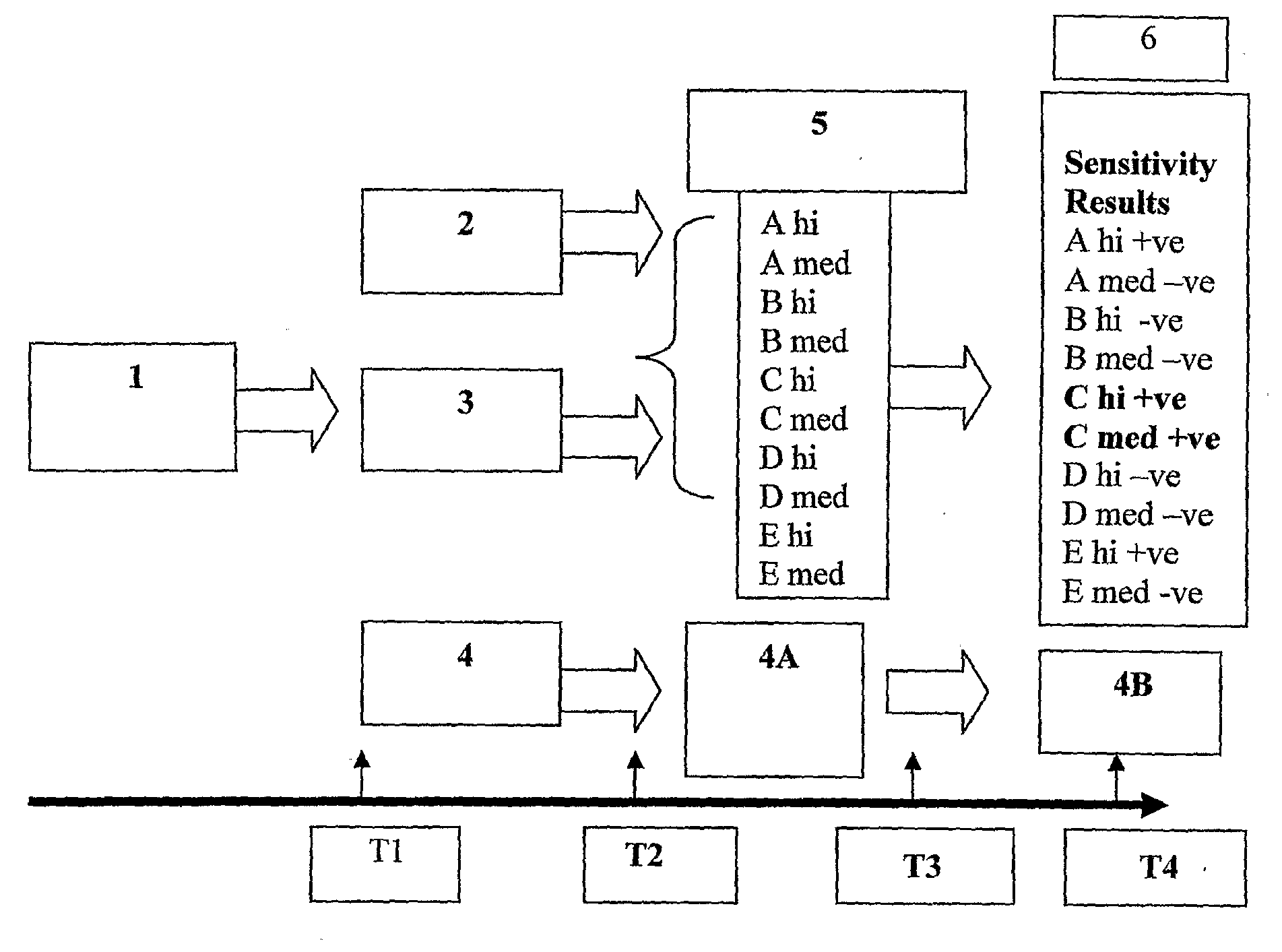In Vitro Evaluation of Micro-Organisms and Their Antimicrobial Agent Susceptibilities
a technology of antimicrobial agents and microorganisms, applied in the field of in vitro evaluation of microorganisms and their antimicrobial agent susceptibilities, can solve the problems of lack of specificity of the system, limited indication, and lack of identification of bacteria, so as to achieve rapid and effective determination of the susceptibility of microorganisms
- Summary
- Abstract
- Description
- Claims
- Application Information
AI Technical Summary
Benefits of technology
Problems solved by technology
Method used
Image
Examples
Embodiment Construction
[0059]SIFT-MS involves the generation of precursor ions (e.g. H3O+, O2+, NO+) from a discharge source that are mass selected by an “upstream” quadrupole mass filter. The selected ion species is then injected into the flow tube by a fast flowing stream of inert carrier gas, eg helium.
[0060]In one form of the method headspace atmospheres are introduced above conventional Biomerieux BacT / ALERT® aerobic or anaerobic blood cultures at a controlled rate into the flow tube precursor ion stream. The count rates of the resulting product ions are then to be determined by a “downstream” quadrupole and particle multiplier detector. Operating in full scan mode, the detector quadrupole is scanned over a predetermined m / z range to obtain a spectrum of product ions. In selected ion mode (SIMscan) the count rate of selected product ions is determined as the downstream spectrophotometer is switched to and remains on selected m / zs.
[0061]In the experiments to test whether it is possible to identify spe...
PUM
 Login to View More
Login to View More Abstract
Description
Claims
Application Information
 Login to View More
Login to View More - Generate Ideas
- Intellectual Property
- Life Sciences
- Materials
- Tech Scout
- Unparalleled Data Quality
- Higher Quality Content
- 60% Fewer Hallucinations
Browse by: Latest US Patents, China's latest patents, Technical Efficacy Thesaurus, Application Domain, Technology Topic, Popular Technical Reports.
© 2025 PatSnap. All rights reserved.Legal|Privacy policy|Modern Slavery Act Transparency Statement|Sitemap|About US| Contact US: help@patsnap.com


